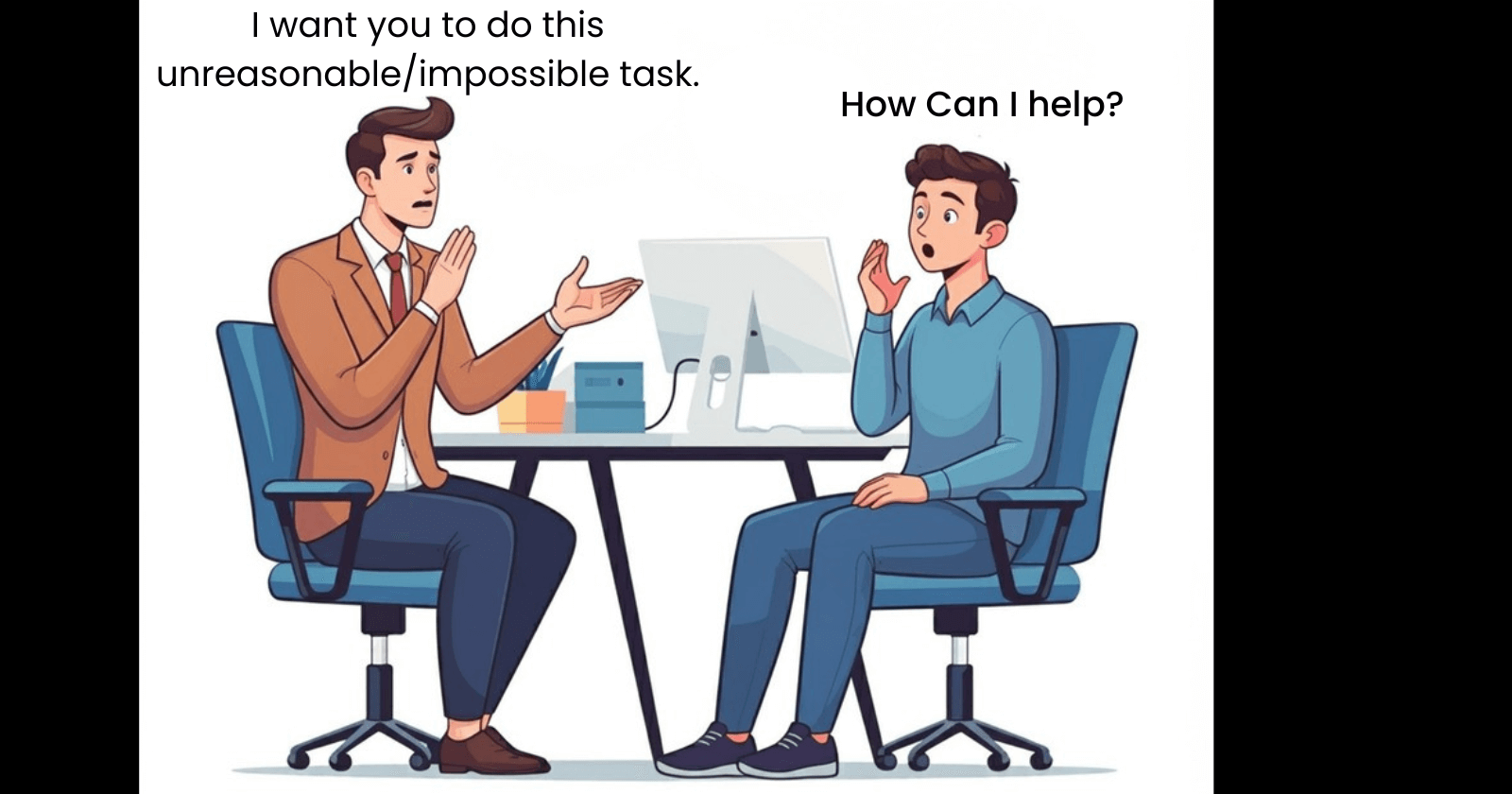How Can I Help?: Navigating Unreasonable Requests
 ITS MAC
ITS MAC
As a squad leader, I've often encountered requests that seem unreasonable or impossible at first glance. It's essential to realize that regardless of the answer you receive, you have a range of responses available to you.
Here are some strategies to consider:
Yes: Sometimes, a straightforward yes is the best response, especially if the task is within your capabilities and aligns with your goals.
Partial Acceptance: If you can't do everything, ask, "If I couldn't do all of this but could do just a part, what part would you have me do?" This shows willingness to help while setting realistic boundaries.
Counter-Offer: If you can't fulfill the entire request, suggest alternative solutions. This shows your willingness to help while maintaining realistic expectations. For example, "I can't do that, but I could do [counter-offer]." This provides options and keeps the conversation constructive.
Stay Curious: Ask follow-up questions to understand the underlying reasons for the request. For example, "Whom else have you asked?" or "Why are you asking me?" This can help you determine if there's a more suitable solution or if the request is simply unrealistic.
Delayed Response: Buy yourself some time with responses like, "Let me think about that" or "I'm not sure—I'll need to check a few things out." This allows you to assess the request more thoroughly.
Create a "third point": Sometimes, saying "no" to a specific task can be difficult. In these cases, consider using an object or a written note to separate the person from the task to create a "third point.". For instance, write down the request and say, "I'm afraid I have to say no to this," which feels less personal than saying no directly to the person.
Be Direct and Honest: While a "no" might seem harsh, it's often necessary. However, provide a clear explanation for your decision. For instance, you could say, "I appreciate your enthusiasm, but unfortunately, I'm unable to assist with that right now due to [reason]."
Offer Future Assistance: If appropriate, offer to help with future tasks or provide guidance on how they can achieve their goal. For example, "I can't help with this right now, but I'd be happy to assist with something else later."
Remember, effective communication is key when dealing with unreasonable requests. By using these strategies, you can maintain positive relationships with your interns while setting clear boundaries.
Example 1
Intern: I want to implement a new, untested feature on the live website immediately.
Response: I understand you're excited about this new feature, and it sounds promising. However, I need to consult with our development team to assess the potential risks and benefits of this feature. Let me get back to you.
Final Response: After careful consideration, we've decided that we can't implement this new feature on the live site right now. It's important to ensure our site remains stable and reliable. However, we can revisit this feature in our next planning session.
Example 2
Intern: I want to implement a feature that is out of scope for the current project.
Response: I appreciate your initiative, but we need to maintain a clear focus and stay within the project scope. Let's document this idea for future projects. Right now, we need to focus on our current deliverables to ensure a successful project.
Example 3
Intern: I want to use this new plugin because it will make the design look good.
Response: I appreciate your enthusiasm for improving our website's design. However, we can't do it right now due to our current project deadlines. Let's focus on completing our current tasks first.
Follow-Up Offer: Once we wrap up our current projects, I'd be happy to revisit your design ideas. How about we schedule a brainstorming session next month to discuss your proposals in detail and plan for a future update?
Thanks for reading.
Subscribe to my newsletter
Read articles from ITS MAC directly inside your inbox. Subscribe to the newsletter, and don't miss out.
Written by

ITS MAC
ITS MAC
He is a web developer. He develops websites using a mobile-first design approach that is fast, user-friendly, and mobile-optimized. He loves JavaScript, React, Python, and kind of tolerates React with TypeScript, but he is happy to use whatever tool is most suited for the job at hand. He is also interested in Server-Side Rendering (SSR) or Single-Page Applications (SPA). Currently, he is discovering Nextjs for SSR/SPA.